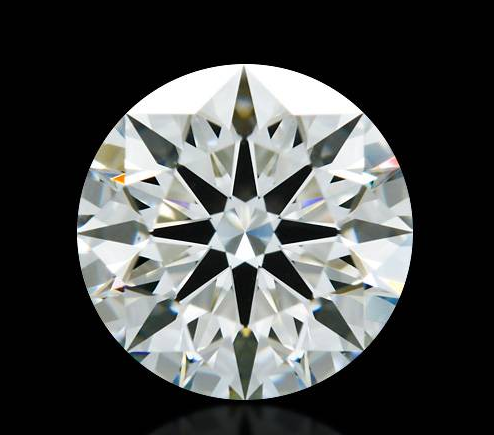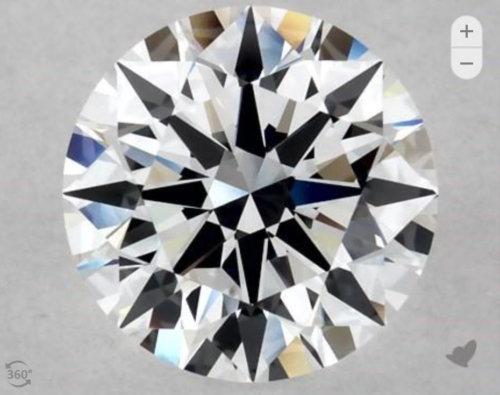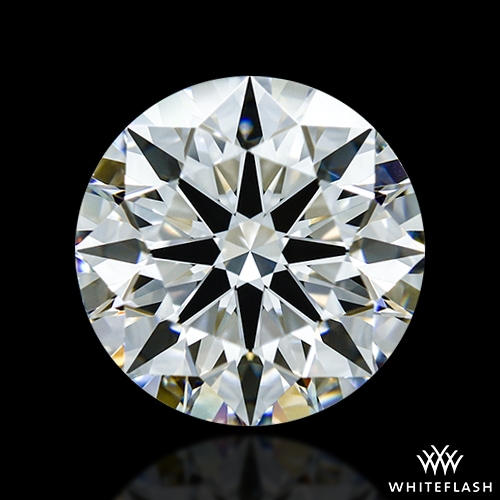This page contains references to diamonds or engagement rings from different companies. Sometimes I do receive a commission when you click on links and buy the products.
Everyone has an idea of a perfect diamond. In your mind’s eye, it’s a diamond that sparkles effortlessly, that has that clear, white color, that has no imperfections–no scratches, scrapes, or blemishes. It’s the kind of diamond you expect to see on the red carpet, or in the high-end retailers. However, many don’t know that these diamonds have specific gradings within the diamond world.
They’re referred to as ‘Flawless’ (FL) or ‘Internally Flawless’ (IF), with these abbreviations exciting any diamond collector or aficionado that comes across them. These gradings are determined by the Gemological Institute of America (GIA), who have set up robust and stringent rules that allow diamond specialists to determine the clarity quality of a diamond.
These are some of the most expensive diamonds available, due to their quality and position on the diamond clarity grading scale. In fact, you won’t commonly see them adorning ring fingers, earlobes, or the neck, as you can find fantastic quality diamonds that provide the same brilliance and don’t have visible blemishes lower down on the clarity scale. FL and IF diamonds are for those looking for something truly rare, truly perfect, truly flawless.
So does FL and IF actually refer to? Are they worth buying? We’ll answer all your burning questions here.
- What Is A Flawless Diamond?
- What Is An Internally Flawless Diamond?
- Should You Buy FL or IF Diamonds?
- Choosing Your Diamond
- Where To Find The Best Diamonds Online
- Flawless Diamonds: An Example
What Is A Flawless Diamond?
Flawless diamonds are one of the rarest types of diamond, especially one that is colorless. In fact, colorless (referred to as color ‘D’ by diamond experts) FL diamonds represent less than 0.001% of the entire world’s diamond production.
These diamonds are called flawless due to their complete lack of blemishes, both internally and externally. Depending on their color and carat weight, FL diamonds will most likely be the most expensive type of diamond you come across.
For example, this 1.08 Carat Round Diamond available at James Allen is $18,400, due to its FL grading and D color grade, alongside its carat weight. It’s a beautiful example of a Flawless diamond.
Most consumers, when purchasing diamonds, will opt for a VS1 or VS2 because, while they have a lower clarity grading, their blemishes are still invisible to the naked eye. This means you can get a superb-looking diamond for a significantly smaller price tag than FL diamonds. But therein lies the pull of both FL and IF diamonds. For these high clarity gradings, it’s not about saving money, it’s about buying something rare and unique–like a piece of art.
What Is An Internally Flawless Diamond?
Internally Flawless diamonds differ from Flawless diamonds in one sense–while they are internally flawless, they may have one or several blemishes externally. This will place them just below flawless diamonds when graded for clarity. However, many people will view that as practically equivalent as they still have the highest quality around.
IF diamonds may be graded as such because of the presence of abrasion, or scratch, or even some natural blemish that can be viewed under 10x magnification. Fortunately for the buyer, these blemishes will be invisible to the naked eye. In many cases, even experienced diamond specialists struggle to tell the difference.
Due to their grading, IF diamonds can be up to 30% cheaper than their FL counterparts. For example, compare these two diamonds–the first, from Whiteflash, the second from James Allen.

1.09 ct D IF Round Cut Loose Diamond – Whiteflash

1.08 ct D FL Carat Round Diamond – James Allen
Despite their similarities, the Flawless diamond from James Allen costs $18,950, $3.592 more than the Whiteflash diamond. With their color, cut, and carat weight being the same, you can see how much clarity grading affects price.
For those looking for an FL or IF diamond to set into an engagement ring or other piece of jewelry, IF diamonds represent a better deal. This is due to the fact that FL diamonds can become IF over time, through wear or in the setting process itself. This means that much of the value that was paid for could be lost, simply through one imperceptible scratch or abrasion.
Should You Buy FL or IF Diamonds?
Our first answer to this question is; Of course, you should buy either an FL or IF diamond. While expensive, they represent the very best of the best.
However, there are more complex answers and considerations for this question that should be stated. First of all, rarity is a compelling thing. Both FL and IF are incredibly rare diamond gradings, and so if you’re looking for something that you don’t regularly come across, these diamonds may be the right choice.
However, because the presence of these diamonds on the market represents a tiny fraction of the entire market, you may have trouble finding the exact diamond you want. While this difficulty will be present, the rarity of these diamonds is what appeals the most to buyers. If you do choose to search for an FL or IF diamond, prepare for a long search–unless you get lucky.
Ultimately, whether you should buy an FL or IF diamond comes down to budget. These are by and far the most expensive diamonds on the market, and so their price should be the first thing you consider. If you’re choosing a diamond to use within a ring, you might be better choosing something between VS2 and VVS1, as these will offer the same optical benefits as an FL.
An eye-clean VS1 can look practically identical to an FL, yet have a significantly smaller cost. If you’re not looking for something truly rare or unique, then consider a lower graded diamond, as it will save you thousands of dollars.
Choosing Your Diamond
To choose a diamond, the first thing you need to do is set yourself a budget. What quality of diamond are you looking for? Contrast this with the amount of money you’re willing to spend and you will be able to better understand what type of diamond you’re looking for. As we said, VS2 to VVS1 would be better suited for a diamond being used in everyday wear, however, let’s assume you have your heart set on either FL or IF.
First of all, IF and FL guarantees that the diamond you’re getting will be eye-clean, meaning you don’t have to worry about spotting any inclusions or external blemishes. Because of this, your main focus when choosing either an IF or FL diamond is to focus on the overall quality of the cut. How precise a diamond has been cut ultimately has the biggest impact on the light performance of a particular diamond. In fact, in most cases, it’s better to buy an ideal cut VS1 than an FL of fair or mediocre cut.
Overall, the biggest consideration you should have is budget. Only purchase what you’re comfortable with purchasing. Don’t allow yourself to be pressured into the highest clarity grades, especially when not considering all the other features of a diamond. Nobody wants to buy a Flawless diamond with a poor cut and a yellowed color. Always do your research before making a purchase.
Flawless Diamonds: An Example
To give you an idea of the kind of FL or IF diamond you should be looking for, alongside the type of diamond retailer you should be purchasing from, we’ve chosen the perfect example.
1.021 ct D IF A CUT ABOVE® Hearts and Arrows Diamond

This 1.021 ct D IF A CUT ABOVE® Hearts and Arrows Diamond is a stunning example of a D IF clarity diamond. Weighing in at 1.021 ct, the diamond is an AGS Ideal cut, and has a D coloration, meaning it will be difficult for you to find a better diamond. It’s offered as part of Whiteflash’s A CUT ABOVE® Hearts and Arrows, which is world-renowned as one of the finest ranges of diamonds on the market today.
Not only does the absolute quality of the A CUT ABOVE® Hearts and Arrows diamonds make them stand out, but also Whiteflash’s commitment to providing a full range of diagnostics, such as light performance imaging, ASET imaging, Ideal Scope, and HD video. When we talk about finding a trustworthy and experienced diamond retailer, this is what we’re talking about.
You can read our review of Whiteflash’s A CUT ABOVE® diamonds here.
Where To Find The Best Diamonds Online
Finding the perfect diamond isn’t just about clarity. You also need to consider cut, color, and carat weight. However, one of the most important considerations people forget about is that the perfect diamond is also about the diamond buying experience. Finding a trustworthy diamond retailer who can provide the best service and the right guarantees regarding your diamond is crucial when purchasing something so beautiful.
If you need fancy shaped diamonds then James Allen is a great option, and Blue Nile have a large selection of lower priced diamonds if you have a small budget.

Richard Jenkins, The Diamond Guru
Get free assistance from the Diamond Guru today. You’ll be glad you did!
- Secure the best quality diamond for your budget.
- Don’t pay over the odds for your diamond ring.
- Have peace of mind that you didn’t get ripped off.
Have a Question? Contact us now…

